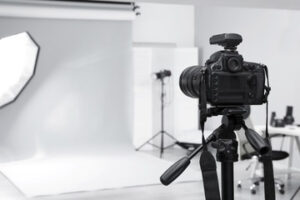What Is a Photo Studio?
A Photo Studio is a place where photographers create and sell photographs. The studio is usually owned by a photographer, who pupils or assistants may assist. The photographer creates and sells photographs for their own use and those of others. There are many different types of photo studios. Here are a few of the most common.

Photo Studio is a perfect place for a professional photo shoot. It should be a comfortable place where you and your clients can work in a relaxed environment. Ideally, you should set up separate areas for different types of work. A portrait photographer would have a backdrop screen, a work desk, and a filing cabinet. Another area for another photographer would have toys and magazines.
First of all, you will need a backdrop. You can use a plain white backdrop or use a colorful tapestry. You can even use thin bed sheets or curtains as backdrops. You can also use wrapping paper to create a specific design. Make sure to choose a background that is both beautiful and affordable. A photo studio should be able to provide ample space for a professional-looking photo. This will make the shoot more comfortable and successful.
Lighting is a critical aspect of a photo shoot. Proper lighting will ensure that shadows and highlights are minimized, and the images will be easier to edit. You also won’t have to worry about driving back and forth to a public restroom, and you won’t have to deal with the hassle of renting equipment or creating makeshift changing rooms. A photo studio will also allow you to take advantage of in-house catering.
Before you start buying photography equipment, research it thoroughly. Understand how each piece of equipment works, and if there’s anything you don’t know, research it online. The internet has a lot of free resources for photographers. Then, start small by purchasing one or two items. Ultimately, you should have a photo studio that can meet your needs and become a local favorite!
The helpers in a photo studio are crucial to the productivity of the photo studio. After all, the photographer is the most expensive resource in a photo studio, so the more time the helpers spend preparing a product for photography, the more efficient the photo studio will become. They also have a huge impact on the final product.
Lighting is also a key factor for a photo shoot. You can experiment with the shutter speed, aperture, and the power setting of the flash head. In addition, you can use a flash light meter to quickly find the best values. It’s easy to get started with studio lighting. A standard flash kit provides plenty of options.
Having your own photo studio will give you more flexibility and freedom in how you work. You can also post your work on social media platforms such as Instagram and 500px, which will increase your chances of getting noticed. Moreover, you will be able to reduce your rental costs and control the entire photography process. However, you should not expect an increase in clients right away.
If you have a lot of space, you can even set up a photo studio in your home. Windows in the studio should face south or north to maximize the natural light. However, keep in mind that daylight is not constant, and cloudy days will require artificial light. For this, you should invest in lighting equipment. Modern LED lamps can provide consistent light for a low price. These lamps are best for tabletop photography. They can also be combined with DIY lighting strips or color filters.
A Photo Studio will make your day easier! You can choose the right time to take the perfect shot. It will be much easier than obtaining permits, and you’ll be able to save time. Furthermore, a photo studio will be available for rent and will give you added comfort and convenience. These benefits make photo studios a great choice for a special event or wedding. These studios will make your shoot a memorable one.
Lighting is an integral part of photo studio photography. Without proper lighting, you will not be able to produce the desired results. In this case, you can take advantage of light stands and reflectors. These are the building blocks of your background support system.
